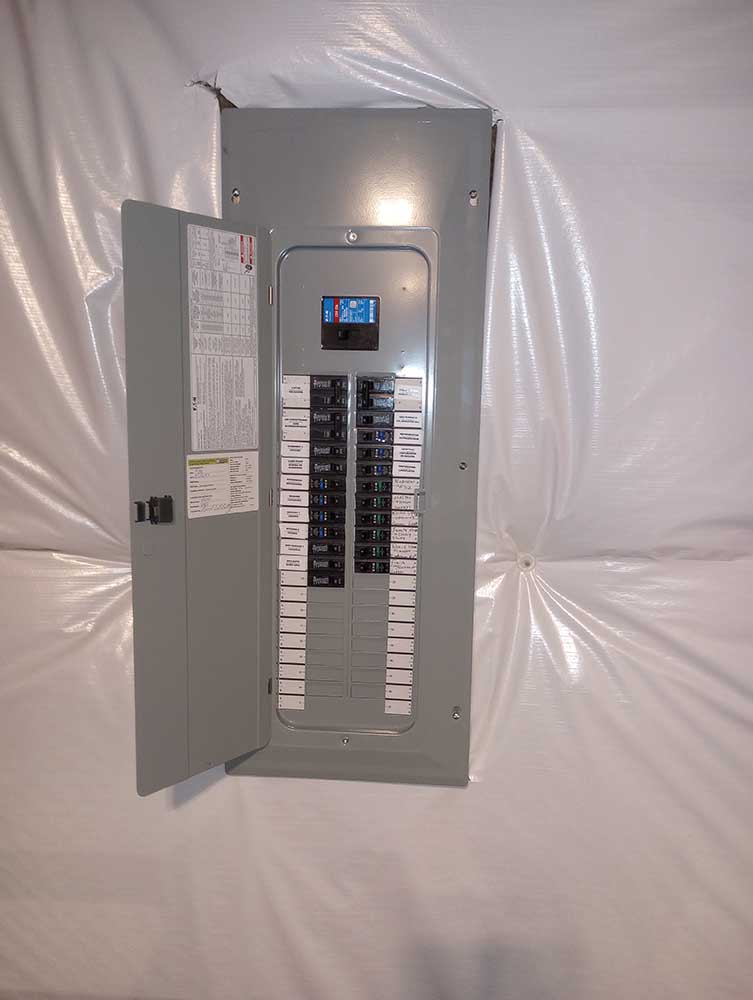
Electrical Safety Tips for Families with Children: Keeping Your Home Safe
When it comes to keeping your children safe at home, electrical safety is often overlooked. Yet, electrical hazards can pose significant risks to curious kids who are just beginning to explore their environment. Electrical outlets, cords, and appliances are everywhere in a modern home, making it essential to take proactive steps to childproof your home’s electrical system.
This comprehensive guide provides actionable tips for parents to childproof their home, install safety features, manage cables effectively, and educate their children about electrical safety. By following these guidelines, you can ensure your home is a safe space for your family.
Why Electrical Safety Matters for Families with Children
Electrical hazards can lead to shocks, burns, and even fires if not properly managed. Children are naturally curious and might unknowingly interact with electrical outlets, appliances, or cords. The U.S. Consumer Product Safety Commission reports that approximately 2,400 children are treated in emergency rooms every year due to injuries involving electrical outlets.
Childproofing your home’s electrical system is not just about reducing risks—it’s about creating a safe environment where your children can explore and grow without unnecessary dangers. Understanding the key areas of concern and implementing the right safety measures can go a long way in preventing accidents.
Install Tamper-Resistant Outlets (TR Outlets)
One of the simplest and most effective ways to childproof your home is by installing tamper-resistant outlets. These outlets are designed with internal shutters that prevent foreign objects from being inserted unless equal pressure is applied to both sides, such as when plugging in a device.
A. Why Choose Tamper-Resistant Outlets?
- Built-in Safety: Unlike plastic outlet covers, TR outlets provide permanent protection that cannot be removed by children.
- Code Compliance: Tamper-resistant outlets are now required by the National Electrical Code® (NEC) in all new homes, so upgrading your outlets ensures your home meets current safety standards.
- Convenience: Once installed, TR outlets require no additional maintenance or effort, making them a hassle-free solution.
B. How to Install Tamper-Resistant Outlets
While some homeowners may feel confident enough to replace outlets themselves, it’s safer to hire a licensed electrician. They can ensure the installation is done correctly and check for any additional wiring issues during the process.
Use Outlet Covers and Safety Plates
For homes without tamper-resistant outlets, outlet covers or safety plates are a must. These are cost-effective solutions that can prevent children from sticking fingers or objects into electrical outlets.
A. Types of Outlet Covers
- Sliding Safety Plates: These replace your standard outlet covers and feature a sliding mechanism that covers the outlet when not in use.
- Plug Inserts: Simple plastic inserts that block access to the outlet.
- Box Outlet Covers: These fully enclose the outlet and plugs, making them ideal for outlets in use.
B. Best Practices for Outlet Covers
- Always choose outlet covers that are difficult for children to remove but easy for adults to operate.
- Ensure all outlets within reach of children, including low wall outlets and power strips, are covered.
- Regularly inspect covers to ensure they remain secure.
Manage and Secure Electrical Cords
Electrical cords can be both a tripping hazard and a danger for children who might chew, tug, or play with them. Proper cable management is essential for maintaining a safe environment.
A. Tips for Managing Cords
- Use Cord Shorteners or Wraps: Excess cords can be shortened using cord wraps, reducing the temptation for children to pull or play with them.
- Conceal Cords with Cord Covers: These are protective sleeves or channels that hide cords along walls or floors, keeping them out of sight and out of reach.
- Secure Cords to Walls or Furniture: Use adhesive clips or cable ties to attach cords to walls, furniture, or baseboards, preventing them from dangling.
B. Replace Damaged Cords
Inspect all cords regularly for signs of fraying, exposed wires, or other damage. Damaged cords should be replaced immediately, as they pose a significant fire and shock hazard.
Keep Appliances and Devices Out of Reach
Appliances and devices such as toasters, kettles, and chargers can be dangerous if left within reach of young children. These items often have exposed electrical components or cords that can easily attract a child’s attention.
A. Appliance Safety Tips
- Unplug When Not in Use: Always unplug appliances when they’re not being used to eliminate the risk of accidental contact.
- Store Appliances Safely: Keep small appliances stored in cabinets or on countertops out of children’s reach.
- Secure Large Appliances: Large appliances like TVs and microwaves should be securely anchored to prevent them from tipping over if tugged on by a child.
B. Use Outlet Timers or Smart Plugs
Smart plugs or outlet timers can automatically shut off power to appliances after a certain period, providing an extra layer of safety.
Install Ground Fault Circuit Interrupters (GFCIs)
Ground Fault Circuit Interrupters (GFCIs) are safety devices that protect against electrical shocks by shutting off power when a ground fault occurs. These are especially important in areas where water is present, such as kitchens, bathrooms, and outdoor spaces.
A. Why GFCIs Are Essential
- Shock Prevention: GFCIs can detect even tiny imbalances in the electrical current and shut off power instantly, reducing the risk of shock.
- Code Requirement: The NEC requires GFCI outlets in all wet or damp locations.
B. Hiring a Professional for GFCI Installation
Installing GFCI outlets is a job best left to a licensed electrician. They can ensure the devices are installed correctly and that your home’s electrical system is up to code.
Childproof Power Strips and Surge Protectors
Power strips and surge protectors are often used to expand the number of available outlets, but they can also pose risks to children if not properly secured.
A. Safety Tips for Power Strips
- Use power strip covers or boxes to block access to unused outlets.
- Place power strips on elevated surfaces out of children’s reach whenever possible.
- Choose power strips with built-in safety features, such as tamper-resistant outlets or automatic shutoff mechanisms.
Educate Children About Electrical Safety
While childproofing your home’s electrical system is essential, it’s equally important to teach your children about electrical safety from a young age. Education helps them understand the dangers and develop safe habits as they grow.
A. Key Electrical Safety Rules for Children
- Don’t Touch Outlets or Cords: Explain that outlets and cords are not toys and should never be touched or played with.
- Avoid Water and Electricity: Teach children to keep electrical devices away from water and to never touch appliances with wet hands.
- Stay Away from Power Lines: If your children play outside, make sure they understand the dangers of power lines and electrical substations.
B. Use Age-Appropriate Resources
There are many books, videos, and online resources designed to teach children about electrical safety in an engaging and age-appropriate way.
Regularly Inspect Your Home’s Electrical System
Even with childproofing measures in place, regular inspections of your home’s electrical system are crucial for identifying and addressing potential hazards.
A. What to Look For During Inspections
- Loose or damaged outlets
- Overloaded circuits or power strips
B. Hire a Licensed Electrician
While you can perform a basic visual inspection, hiring a professional electrician for an annual or biannual inspection ensures that your system is safe and up to code. They can identify hidden issues and recommend necessary upgrades or repairs.
Be Prepared for Emergencies
Despite your best efforts, accidents can happen. Being prepared for electrical emergencies can help minimize harm and protect your family.
A. Emergency Tips
- Know How to Turn Off Power: Familiarize yourself with your home’s electrical panel and know how to shut off power in an emergency.
- Have a Fire Extinguisher Ready: Keep a Class C fire extinguisher, designed for electrical fires, in an easily accessible location.
- Teach Your Children to Call for Help: Make sure your children know how to call 911 in case of an emergency.
Secure Outdoor Electrical Fixtures and Devices
Outdoor electrical fixtures, such as outlets, lighting, and pool equipment, can also pose risks for children. Ensuring that these outdoor components are safe and secure is an essential part of comprehensive childproofing.
A. Protect Outdoor Outlets
- Install weatherproof outlet covers to shield outdoor outlets from moisture, dirt, and curious little hands.
- Use GFCI outlets outdoors to reduce the risk of shocks, especially in areas exposed to water, such as near pools or sprinklers.
- Ensure outdoor outlets are properly mounted and secure to prevent tampering.
B. Check and Secure Outdoor Wiring
- Inspect outdoor wiring regularly for signs of wear, fraying, or exposure. Damaged wires should be replaced immediately by a professional electrician.
- Conceal exposed outdoor wiring with protective conduit or bury it underground to eliminate trip hazards and tampering risks.
C. Childproof Pool and Hot Tub Electrical Systems
- Ensure all electrical components for pools and hot tubs meet code requirements and are professionally installed.
- Install safety barriers, such as fences, to prevent children from accessing these areas without supervision.
Maintain and Test Safety Devices Regularly
Childproofing measures are only effective if they are properly maintained and tested. Over time, safety devices like tamper-resistant outlets, GFCIs, and power strip covers can wear out or malfunction, so regular maintenance is key to ensuring long-term safety.
A. Regular Testing of GFCIs
- Test GFCI outlets monthly using the “test” and “reset” buttons to ensure they are functioning properly.
- If a GFCI fails to trip during testing, replace it immediately.
B. Inspect Safety Covers and Plates
- Periodically check outlet covers and safety plates to ensure they remain securely attached and free of cracks or damage.
- Replace any damaged safety devices promptly to maintain protection.
C. Evaluate Childproofing as Children Grow
- As children grow older, their ability to interact with their environment changes. Reassess your childproofing measures regularly to address new risks and teach age-appropriate safety rules.
D. Schedule Professional Inspections
- Have your home’s electrical system inspected by a licensed electrician every 1–2 years. Professionals can identify issues that may not be visible during a DIY inspection and recommend upgrades to improve safety.
Electrical Safety is Crucial
Creating a safe home environment for your children requires a proactive approach to electrical safety. By installing tamper-resistant outlets, managing cords effectively, securing appliances, and educating your children about electrical hazards, you can significantly reduce the risk of accidents. Regular inspections by a licensed electrician and the use of safety devices like GFCIs and outlet covers provide an additional layer of protection, ensuring your home is as safe as possible.
Remember, when it comes to your family’s safety, no precaution is too small. If you have concerns about your home’s electrical system, don’t hesitate to contact a professional electrician to assess your setup and recommend improvements. A little effort today can prevent accidents tomorrow, giving you peace of mind as your children explore and grow in a safe environment.



